Authentic Kalighat painting depicting a woman with a cow -1 Pcs
₹2,000.00
The Kalighat Painting Depicting a Woman with a Cow stands as a graceful and profound example of Bengal’s celebrated Kalighat art tradition, which flourished in 19th-century Kolkata. This artwork captures the spiritual harmony between human and animal, reflecting themes of compassion, motherhood, and the deep cultural bond India shares with the sacred cow. Created in the distinctive Kalighat style, it merges fluid brushwork, bold contours, and emotional depth to present a moment that is both serene and symbolic of India’s devotional life and social ethos.
| Painting Medium | Natural Color on paper |
|---|---|
| Shipping | 1-3 Business days after placing the order |
| Artist | |
| Frame status | unframed |
| Dimensions | 7 * 11 in |
The Kalighat Painting Depicting a Woman with a Cow stands as a graceful and profound example of Bengal’s celebrated Kalighat art tradition, which flourished in 19th-century Kolkata. This artwork captures the spiritual harmony between human and animal, reflecting themes of compassion, motherhood, and the deep cultural bond India shares with the sacred cow. Created in the distinctive Kalighat style, it merges fluid brushwork, bold contours, and emotional depth to present a moment that is both serene and symbolic of India’s devotional life and social ethos.
Origins of the Kalighat Tradition
The Kalighat School of Painting emerged near the Kalighat Temple in Kolkata around the early 1800s. Rural patuas (folk scroll painters) migrated to the city and began adapting their traditional storytelling art to urban audiences. They painted on mill-made paper using natural pigments, creating compact, single-frame compositions that were easy to sell to temple visitors and British travelers.
These works, while often devotional, also explored contemporary subjects such as urban life, colonial influence, and social satire. The Kalighat Painting of a Woman with a Cow embodies both the spiritual and humanistic sides of this tradition — connecting divine symbolism with everyday tenderness.
The Symbolism of the Cow in Indian Art
In Indian culture, the cow is revered as a symbol of nurturing, selfless giving, and maternal abundance. Often associated with goddesses like Kamadhenu (the wish-fulfilling cow) and Parvati, the cow represents purity, fertility, and devotion. In this Kalighat painting, the woman’s gentle interaction with the cow may be interpreted as an expression of these values — portraying the sacred feminine’s connection with nature, compassion, and protection of life.
The cow is not merely an animal here but a divine companion — a visual embodiment of sustenance, virtue, and the cycle of life itself. The woman’s posture and gesture, whether offering food or caressing the cow, evoke an aura of reverence and love that transcends time.
Womanhood and Devotion in Kalighat Art
Women frequently appeared as central subjects in Kalighat paintings, often depicted as embodiments of beauty, piety, or strength. The woman with a cow represents the compassionate side of femininity — nurturing, caring, and spiritually connected to the natural world.
While some Kalighat artworks satirized social vanity or hypocrisy, this particular theme leans toward purity and devotion. The woman, clothed in a simple sari with graceful curves and calm eyes, becomes a symbol of Shakti — the divine feminine energy that sustains all life.
Through minimal yet expressive lines, the artist captures her tenderness toward the cow, reminding viewers of the ancient Indian philosophy where divinity resides in all living beings.
Artistic Style and Composition
The Kalighat Painting of Woman with a Cow demonstrates the signature traits of this Bengal art form — simplicity of composition, confident brushwork, and emotional expressiveness. The background is left unpainted, directing full attention to the figures. The woman’s contours are soft yet decisive, her jewelry delicately outlined, and the cow’s form stylized yet full of warmth.
This visual minimalism enhances the emotional intimacy between the subjects. The use of natural pigments — derived from minerals, plants, and soot — lends the painting a subtle matte texture, while the artist’s controlled shading technique (bhanga) gives volume to both figures. The interplay of ochre, black, and white tones produces a calm yet vibrant aesthetic, characteristic of classical Kalighat works.
Cultural Context and Moral Undertones
In colonial Bengal, Kalighat painters often used their art to comment on societal changes — urbanization, modern habits, and shifting moral values. Yet, the woman with cow theme remains one of purity and spiritual refuge, untouched by satire. It reflects a longing for simplicity and moral balance amid rapid modernization.
The imagery may also subtly evoke the mythological bond between Radha and Krishna or Yashoda and baby Krishna with a cow — both symbolizing divine love and maternal devotion. Thus, the scene, while secular in appearance, resonates deeply with religious sentiment and emotional universality.
Emotional and Symbolic Harmony
The relationship between the woman and the cow in this Kalighat painting embodies equilibrium between human and nature. The serene exchange of affection between them becomes a metaphor for peace, coexistence, and gratitude — values central to traditional Indian philosophy.
This emotional harmony is emphasized through the rhythmic balance of form: the woman’s curved silhouette mirrors the cow’s posture, creating a visual dialogue of empathy and unity. The absence of a background narrative allows viewers to meditate solely on this timeless bond.
Craftsmanship and Materiality
Executed on handmade or mill paper, the Kalighat Painting of a Woman with a Cow uses natural dyes mixed with gum arabic to achieve smooth texture and luminosity. Artists employed brushes made of fine animal hair to ensure graceful strokes, resulting in figures that seem alive with subtle motion.
Each element in the composition — the woman’s bangles, the cow’s horns, or their shared gaze — demonstrates the painter’s mastery of minimalism. The patuas (artists) were storytellers as much as painters, transforming sacred values into visual poetry through every brushstroke.
Legacy and Modern Relevance
Today, the Kalighat Painting of a Woman with a Cow stands as a bridge between India’s spiritual traditions and its evolving artistic identity. Its enduring relevance lies in its portrayal of compassion — a value increasingly significant in a world disconnected from nature and empathy.
Modern artists and scholars regard Kalighat paintings as precursors to Indian modernism. Their stylistic simplicity influenced painters like Jamini Roy, who drew inspiration from their bold lines and cultural essence. Contemporary collectors cherish these works not only for their beauty but also for their profound
Explore more handcrafted artworks in our Pattachitra Collection or follow The Bengal Craft on Instagram to see new arrivals and artisan stories.
Check out our other products- Pattachitra
Be the first to review “Authentic Kalighat painting depicting a woman with a cow -1 Pcs” Cancel reply
Related products
Pattachitra
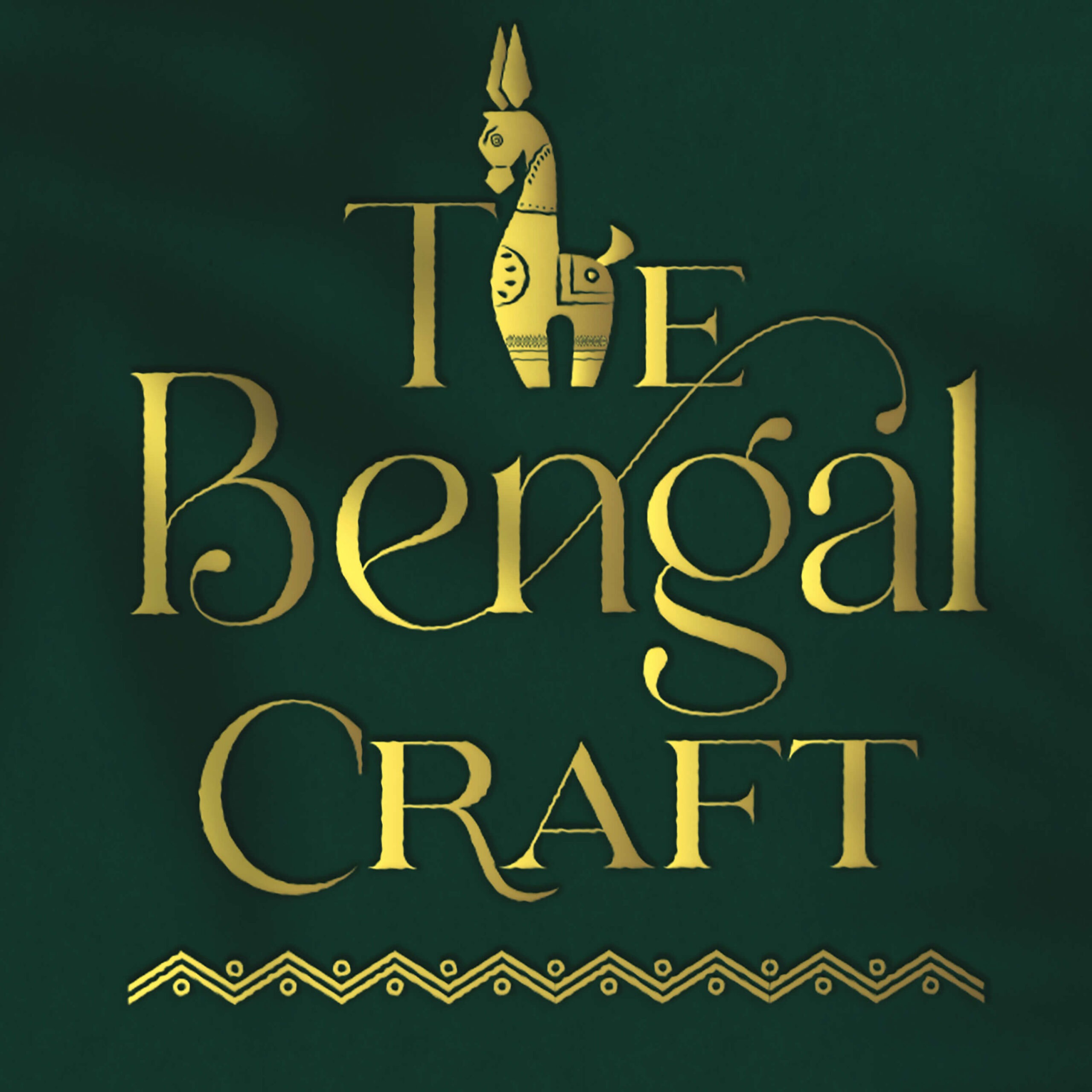


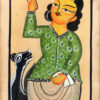
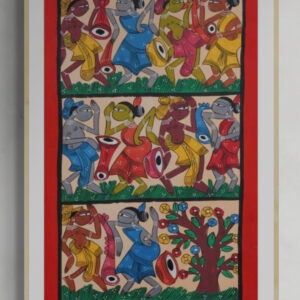
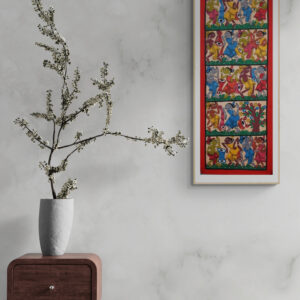
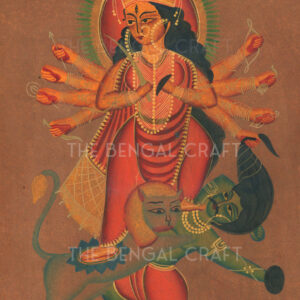
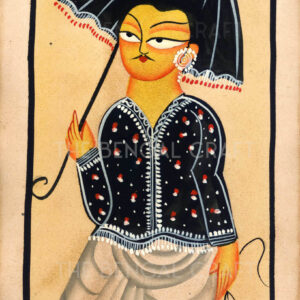
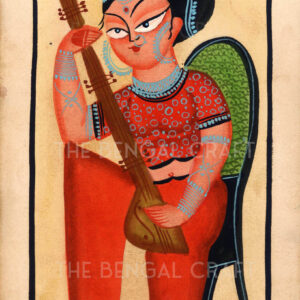
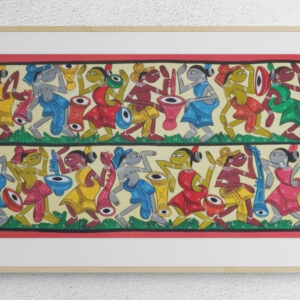
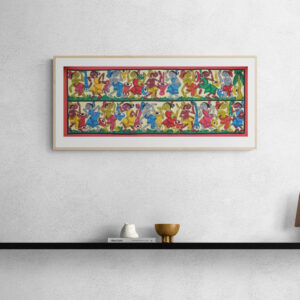
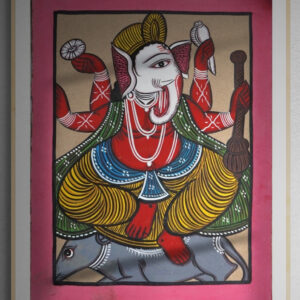
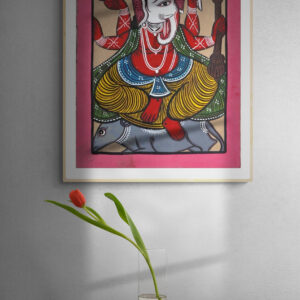
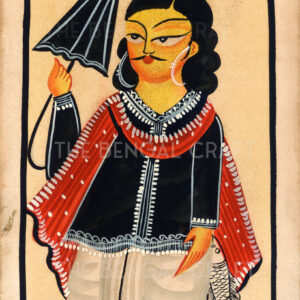
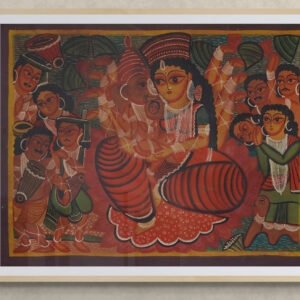

Reviews
There are no reviews yet.